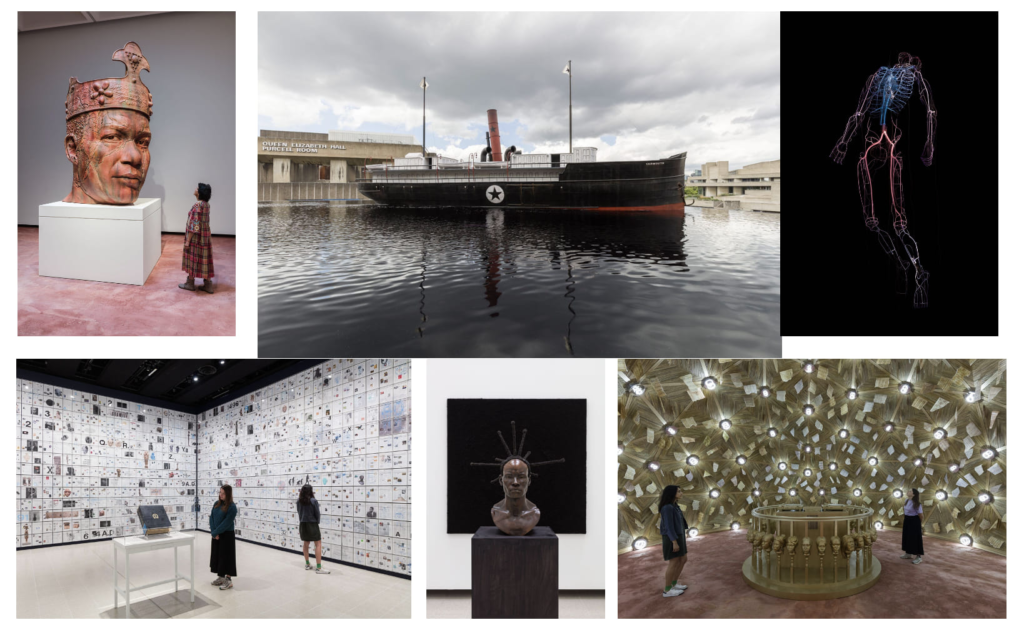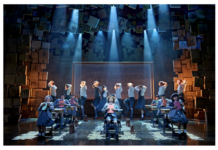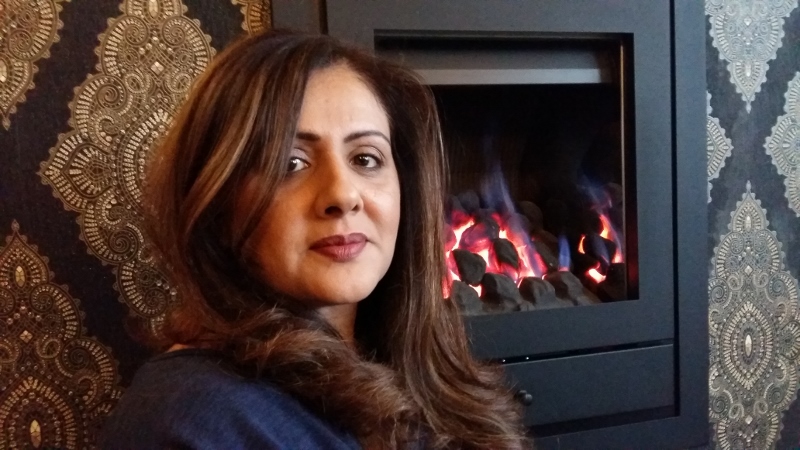
The Hayward Gallery presents Tavares Strachan: There Is Light Somewhere (18 June – 1 September 2024), the first mid-career survey of the New York-based, Bahamian artist. A recipient of the MacArthur ‘Genius Grant’, Strachan has created a range of boldly inventive and ambitious exhibitions over the past two decades, including presentations at the 2019 Venice Biennale and the 2018 Carnegie International, establishing him as one of the most compelling, imaginative and audacious artists of his generation. Whether making expeditions to the Arctic and sending back a 4.5 ton block of ice to his birthplace in the Bahamas; launching into orbit a gold sculpture of the first Black American in the US space programme; or creating his own alternative 3,000-page encyclopaedia, Strachan has worked to expand the boundaries of contemporary art with the imaginative verve of a true pioneer.
This multifaceted exhibition showcases the ways in which Strachan’s art vividly highlights key questions of cultural visibility. Dedicated to telling ‘lost stories’, Strachan celebrates unsung explorers and neglected cultural trailblazers, inviting audiences to engage with overlooked characters whose lives illuminate histories hidden by bias. Featuring monumental new sculptural commissions alongside striking large-scale collages, neon works, bronze and ceramic sculptures, and mixed-media installations, Tavares Strachan: There Is Light Somewhere takes visitors on a journey of discovery and recovery that is simultaneously playful and impactful. Strachan’s vividly realised stories of erasure and remembrance shine a light not only on histories of colonialism and racism, but also on how the past impacts the universal desire for a sense of belonging.
The importance of this sentiment is spelled out across the facade of the Hayward Gallery in a nine-metre-high neon work that declares: You Belong Here. Accompanying this work outside the gallery is a giant bronze head of 20th century Black nationalist Marcus Garvey, whose own ambitious projects were fueled, in no small part, by his desire to forge a collective sense of belonging for people of the African diaspora. Marked and weathered so as to resemble an ancient sculpture, Garvey’s head is presented as if a relic of a lost civilisation. On the Hayward’s flooded sculpture terrace, Strachan presents a large-scale sculpture of the S.S. Yarmouth, the flagship of the Black Star Line, the shipping company founded in 1919 by Jamaican social activist Marcus Garvey with the goal of facilitating trade and travel between the United States, the Caribbean and Africa.
The central part of the exhibition is focused around Strachan’s Encyclopedia of Invisibility (2018), which the artist describes as ‘a home for lost stories’. The product of an immense (and ongoing) research project, this work features over 17,000 entries detailing extraordinary figures forgotten by history. Conceived as a much-needed alternative to the hidebound viewpoint reiterated by traditional encyclopaedias, Strachan’s enormous, leather-bound volume calls into question the power relationships that frame and legitimise certain stories, while obscuring and erasing others. Hundreds of select pages from the Encyclopedia of Invisibility, many animated by vivid images, are presented in a wall-to-wall installation that will enable visitors to scan some of the volume’s expansive contents. In addition, the exhibition includes a display of Strachan’s large-scale Encyclopedia Paintings – collage-like compositions that strikingly, and pointedly, juxtapose images drawn from diverse fields of history and culture.
There is Light Somewhere also showcases several bodies of work in which the artist imaginatively remaps lost connections to traditional African cultures. Distant Relatives (2020) pairs tribal masks from different regions of Africa and Papua New Guinea with plaster busts of Black cultural figures in the West, ranging from well-known figures such as author James Baldwin and singer Nina Simone to Jamaican-British nurse and entrepreneur Mary Jane Seacole. A wide-ranging selection of Black cultural and political figures – from South African activist Steven Biko and Ethiopian emperor Haiie Selassie, to pioneering dub producer King Tubby – also appear in Strachan’s painted sculptures, some of which recall traditional clay ceremonial vessels and pots whilst bringing together dream-like mixes of objects and symbols that hint at a spiritual or mythic dimension to these public personae. The exhibition also includes the new commission Intergalactic Palace (2024), a nine metre wide thatched hut inspired by the artist’s travels to Uganda’s ancient Kingdom of Buganda. This structure will contain a sound and light installation titled ‘Sonic Encyclopedia’, informed by the artist’s interests in the origins of Black music, at the centre of which stands a DJ music console adorned with figures of musicians past.
Finally, a selection of Strachan’s early work focuses on projects that address cultural histories of exploration, including the artist’s 2008 creation of the Bahamas Air and Sea Exploration Center (BASEC), conceived as a Bahamian community project to increase young people’s access to science and technology. This section brings together works that deal with Strachan’s own activities as an explorer, many of which implicitly challenge historical stereotypes, as well as pieces that pay homage to pioneers such as the African-American explorer Mathew Henson, who may have been the first person to reach the North Pole. Other works are inspired by individuals who broke physical and social barriers, or who explored uncharted territories of knowledge.
Tavares Strachan says: “My practice as an artist is a quest to reveal hidden histories and to tell lost stories with a weight that matches the profound nature of the characters I speak for. I have always thought about making as a form of storytelling, a way for us to engage in things that might be more difficult to grasp during the normal course of our day.”
Ralph Rugoff, Director of the Hayward Gallery, says: “There Is Light Somewhere takes visitors on a thrilling and deeply felt journey of discovery and recovery. Referencing numerous histories, people, objects and belief systems that lie outside the often narrow parameters of Western contemporary art, Tavares’ exhibition offers revelatory lessons that profoundly shift our view of the world. Through surprising juxtapositions, stirring memorials, and inventive homages, his work extends an invitation to dig deeper and explore what lies beyond what we already know.”
The exhibition is accompanied by a fully illustrated catalogue designed in close collaboration with the artist. It features an introduction and interview with the artist by Hayward Gallery Director Ralph Rugoff, new essays by writer and curator Ekow Eshun and American academic Maggie Cao, and an index featuring short biographies of some of the leading characters that feature in Strachan’s art.
Tavares Strachan: There Is Light Somewhere is curated by Hayward Gallery Director Ralph Rugoff, with Assistant Curator Thomas Sutton and Curatorial Assistant Hannah Martin. Its themes inspire the Southbank Centre’s wider multi-artform summer programme ‘You Belong Here’, exploring the notion of welcome and belonging.
Tavares Strachan: There Is Light Somewhere is kindly supported by the Exhibition Supporters’ Group: The Form Foundation; Max and Monique Burger and the TOY Family; Perrotin; Marian Goodman Gallery; Bridgitt and Bruce Evans; Mark Wadwha & 180 Strand; Burke Family Foundation; Mary and Daniel James; Tristin and Martin Mannion, Boston, MA; Simon Morris and Annalisa Burello; Sarah Cannon; Catherine Walsh; David Maclean; and those who wish to remain anonymous.
The public programme is kindly supported by the U.S. Embassy London. Additional support for the exhibition’s outdoor public artwork is provided by VIA Art Fund.
The exhibition catalogue is kindly supported by the Glenstone Museum.
Additional support for the exhibition’s outdoor public artwork is provided by VIA Art Fund.
This exhibition is presented alongside Naomi Rincón Gallardo: Sonnet of Vermin in the Hayward Gallery’s HENI Project Space. Please find more information on this exhibition here.
Written by Nura Arooj















